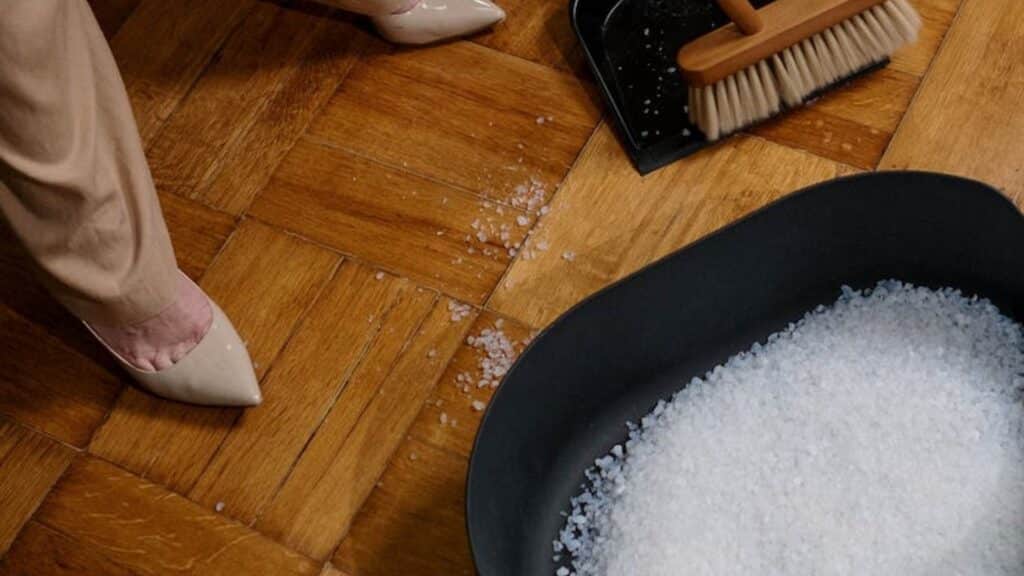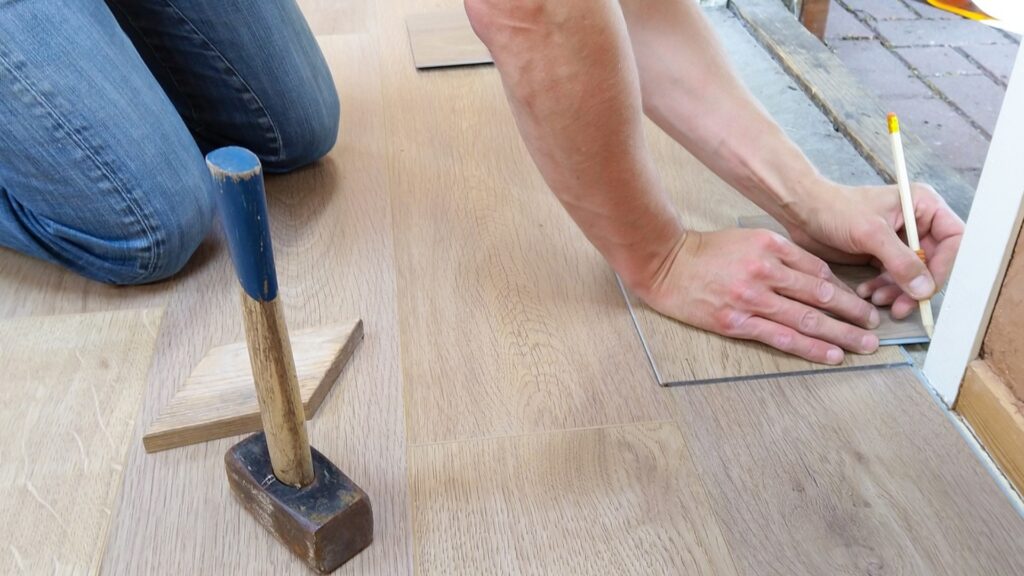Last Updated on June 8, 2023 by Pro Handyman Editorial Team
With a rich and timeless appeal, hardwood floors are an exquisite addition to any home. But even these high-quality floors are susceptible to damage over time. Our expert guidance will walk you through each step to repair various hardwood floor damage, ensuring your floor remains as stunning as the day it was installed.
Recognizing the Hardwood Floor Damage
Despite their name, hardwood floors can suffer from scratches, gouges, and discoloration, given their relative softness compared to materials like tile, stone, or laminate. Surface scratches and gouges may seem inevitable, but they can often be repaired with the right know-how.
Repairing Scratches and Gouges in Your Hardwood Floors
While severe damages may necessitate refinishing, we’ll guide you through repairing minor scratches and gouges on your hardwood floors.
For merely superficial scratches, a light sanding with fine-grit sandpaper might be enough to smooth out the flaw. Once you’ve filed the area, you can apply a wood stain that matches your floor’s color. After the paint has dried, reapply a finish to the sanded area to protect the floor and maintain its shine.

Conquering Water Damage on Hardwood Floors
Water damage can present as finish damage, discoloration, or even warping and buckling of the boards. The repair process depends on the severity of the injury.
Dealing with Severe Water Damage
Replacement might be the only solution for severe water damage causing warping and buckling of the boards. This process requires identifying and buying identical replacement boards.
Removing Water Stains
Smaller water stains might be removable with a white cloth and a medium-heat iron. Iron over the stain gradually, checking frequently to ensure the stain is fading without causing additional damage.
For more extensive water stains, sanding, bleaching, and refinishing might be necessary. This complex process might require a professional flooring contractor, especially if the stain is in a noticeable area.
Mending Minor Scratches on Hardwood Floors
Scratches on your hardwood floors can be smoothed out using steel wool or fine-grit sandpaper. You might require a scouring pad dipped in mineral spirits for polyurethane finishes.
Be sure not to wax a polyurethane-coated wood floor, as this complicates recoating without complete sanding. If you want to hide scratches, use paste wax in clear, honey tone or brown to match any wood floor. For deeper scratches and dents, wood-repair wax sticks can be handy.

Repairing Gouges and Dents on Hardwood Floors
Minor dents might be rectified by applying a few water drops and mild heat, allowing the wood to swell to its original shape. Use epoxy-based wood floor filler and wood stain to protect the surrounding area with tape to prevent filler misplacement for deep gouges or marks.
Replacing Damaged Hardwood Flooring
In case of severe damage or rot, sections of flooring must be replaced. This process involves cutting out or prying up a selection of the finish flooring, adhering replacements to the subflooring, filling cracks, sanding the surface, and refinishing.
Common Hardwood Floor Damages
Understanding the nature and causes of hardwood floor damage is the first step to its repair. The structure of a stained hardwood floor consists of three layers:
- The Finish: This protective layer is usually a hard, transparent coat of polyurethane shielding the wood stain and underlying wood.
- The Wood Stain: A pigmentation layer enhances the wood’s appearance.
- The Hardwood: These are the actual floorboards, commonly made from oak, but can include other hardwood varieties.
The common hardwood floor issues that you might encounter include:
- Buckling, Crowning, and Cupping: These problems arise due to temperature and humidity changes, causing the hardwood to contract or expand.
- Scratches, Dings, and Dents: Wear and tear, moving furniture without protective pads, pets, and dropped objects can lead to these issues.
- Fading Hardwood Floors: Direct sun exposure can fade your floor, giving it an old and worn-out look.
- Hardwood Floor Warping typically occurs in areas exposed to high humidity and water, such as basements.
- Gouges: Accidental dropping or dragging of heavy objects and hyperactive pets can lead to deeper scratches reaching the wood.
- Other Damages: These include burns near kitchen stoves, wood stoves, and fireplaces, pet accidents, and food spills.
Now that we understand the common problems, let’s dive into their solutions.
Mastering Hardwood Floor Repair
Hardwood floors, an epitome of elegance and warmth, are often prone to scratches, stains, and wear over time. These issues, while inevitable, can be addressed with effective repair techniques, proper know-how, and a small budget. In this guide, we will meticulously delve into various methods for hardwood floor repair, the costs involved, and DIY strategies for those willing to take matters into their own hands.

The Real Cost of Hardwood Floor Repair
One critical factor in deciding the repair method is cost. Having a clear idea about the financial commitment you’re about to make is crucial. Remember, the price can vary greatly depending on the region, the severity of the damage, the type of wood, and the method chosen for the repair.
- Recoating: The DIY costs for a minor scratch repair are typically affordable. You can expect to spend around $30 for sandpaper, mineral spirits, a plastic putty knife, wood filler, and a stain marker. If the damage is widespread, consider the cost of a respirator, a heavy floor sander, a hand sander, a shop vac, and various grits of sandpaper and wire sanding discs.
- Refinishing: A professional service can range from $3 to $5 per square foot. However, this estimate can increase if you have damaged floorboards that need replacement or floor joists that need reinforcement.
- Replacing: The replacement cost can range from $8 to $15 per square foot, including the cost of new hardwood. However, if you choose to use a system like Easiklip, you’ll save on labor costs.
Conclusion
Hardwood floors, despite their beauty and durability, are not impervious to damage. Over time, the wooden surface can get scuffed, scratched, or dented due to regular use. However, you can repair your hardwood floor with the right approach and bring back its original elegance.
The three critical methods discussed – recoating, refinishing, and replacing – can be chosen based on the severity of the damage and your budget.
Whichever method you choose, remember that proper care and maintenance can go a long way in preserving the beauty of your hardwood floor. Regular cleaning, avoiding excessive water, using appropriate cleaning agents, controlling humidity, and proper usage can prevent damage and prolong the life of your floor.
When properly cared for, wood floor repairs can last a lifetime, becoming a beautiful centerpiece of your home, radiating style, warmth, and sophistication.
